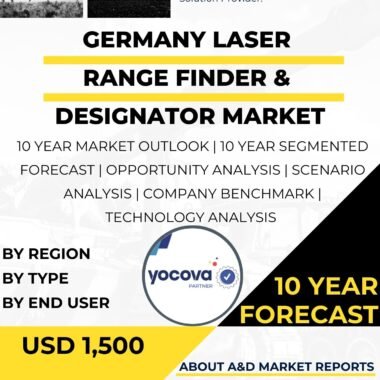Description
The 155mm artillery shell market in South Korea is undergoing a period of rapid transformation, marked by both technological advancement and a surge in domestic and international demand. South Korea?s defense industry has long emphasized innovation and manufacturing efficiency, with companies like Hanwha Defense and Poongsan playing a pivotal role in bolstering artillery shell production capacity. The strong geopolitical climate in the region, particularly the perennial tension with North Korea, has catalyzed continuous investment in South Korea?s artillery munitions sector. The government?s industrial policies have fostered a robust collaboration between state institutions and private manufacturing, fueling consistent growth and capacity expansion to meet both military readiness and global opportunities.
A defining trend in the market centers on the mass production of newly developed 155mm extended-range artillery shells for platforms such as the K9 Thunder self-propelled howitzer. The completion of a multi-year research and development project led to successful trials and the recent launch of mass production, following regulatory certification from the Defense Acquisition Program Administration (DAPA). The new projectile incorporates base bleed technology and a rocket motor, extending effective range by roughly 30% compared to existing rounds and reaching up to 60 kilometers. This technological leap not only increases the strategic capabilities of the Republic of Korea Army but is also designed to enhance the export potential of both artillery shells and howitzer systems worldwide.
Production figures underscore the scale of the industry: South Korea produces approximately 200,000 155mm shells annually, a capacity set to rise substantially as facilities expand under the guidance of major defense firms. The capacity is aimed at addressing both domestic demands?given the proximity to North Korea and the necessity for military preparedness?and the needs of allied nations. Growing international interest in South Korean artillery shells has seen export deals with countries such as Poland, and South Korea has played a notable role as an indirect supplier to other global conflict zones, such as through shipments to Ukraine in coordination with the United States in response to the Russia-Ukraine war.
The broader ammunition market in South Korea is forecast to expand steadily, with a compound annual growth rate of over 3% projected for the next decade. The market?s dynamism is supported by several threads: military modernization programs, rising global demand for advanced and smart weapon systems, and South Korea?s ability to rapidly respond to both export orders and emergent global crises. There is also a strong focus on developing precision-guided, high-end munitions to stay at the technological forefront. The ammunition market?s expansion is further bolstered by government incentives, streamlined regulatory processes, and a keen focus on export-oriented growth strategies within the defense sector.
South Korea?s aspirations extend beyond domestic security concerns, aiming to cement its role as one of the world?s top arms exporters. The government?s assertive support for the defense industry, along with an aggressive defense export posture, is designed to capture a larger share of the global 155mm artillery market. While the majority of current production serves national defense requirements and contingency reserves, ongoing upgrades and innovations boost the range, precision, and versatility of the country?s artillery munitions, making South Korean products attractive on the global market.
Despite these advances, the market is not immune to potential risks such as shifting global alliances, regional security uncertainty, and the need for careful management of technology and trade relationships. Nonetheless, the synergy of state policy, industrial capacity, and ongoing advancements in ammunition design positions South Korea?s 155mm artillery shell market as a vibrant and increasingly influential segment of the global defense landscape, characterized by innovation, growth, and growing international stature.




